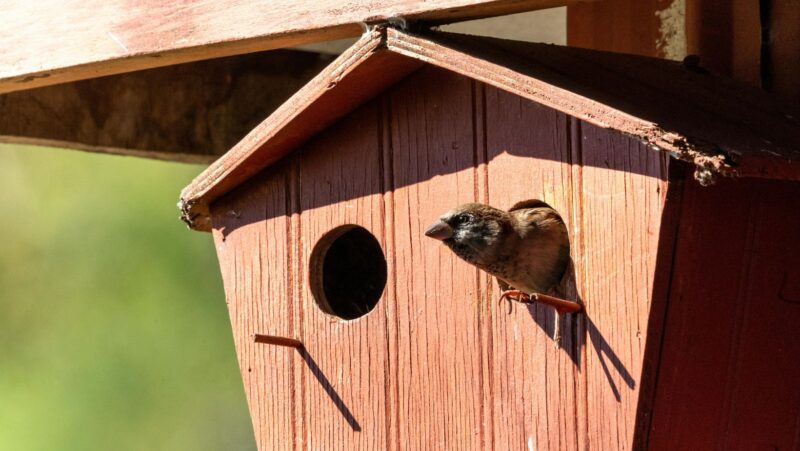
Your home’s exterior is like its armor. It stands up to sun, rain, snow, and wind daily. But over time, even strong materials start to wear down. The biggest factor? The changing seasons. Each one brings new challenges, most of which can’t be stopped. What you can do is take action before damage takes hold.
If you don’t keep an eye on your home’s outside, small issues can become expensive problems. Mold, water damage, and rot often start quietly. Regular maintenance helps prevent that from happening. Here’s how each season affects your property, and what you can do about it.
How Different Seasons Impact Your Home’s Exterior
Nature doesn’t take breaks. Your home feels the pressure year-round, even if you don’t always notice it. To keep things under control, many homeowners rely on exterior cleaning services like those offered by TC Pro Wash. Regular maintenance helps tackle small problems before they turn into expensive repairs. Let’s break down how each season affects different parts of your exterior.
Spring
Spring is often seen as the season of new beginnings, but it’s tough on your house. As plants bloom, they release heavy amounts of pollen. Rain mixes with that pollen, coating your siding, windows, and driveway in a sticky film. It’s also the season when mold and mildew thrive, especially in damp corners.
Summer
Summer brings sunshine and heat. While it’s great for your garden, it’s rough on paint and wood. UV rays break down paint, leaving it dull or flaky. Vinyl siding can warp, and wooden features dry out and crack. The risk of algae on shaded walls also increases with humidity.
Fall
Fall is leaf season. Sounds peaceful, but falling leaves pile up in gutters and corners. When they stay wet, they trap moisture. That moisture feeds mildew, and soon, you’ve got a hidden mess. Rodents may also look for cozy spots under eaves and in vents.
Winter
Winter is harsh. Ice forms in cracks, expanding and splitting the surface. Snow builds up on roofs and around foundations. Salt from sidewalks can stain driveways or wear down pavers. If water gets into the siding or under the paint, it freezes and expands, pushing things apart from the inside. The U.S. Department of Energy recommends seasonal inspections and weatherization to reduce long-term structural damage and improve home efficiency.
Common Signs That Your Home Needs Exterior Cleaning
Many homeowners wait too long before acting. Often, it’s because they don’t realize what’s going on outside. Here are a few signs your home might be due for a deep clean:
- Dark streaks running down your siding or roof. These can be signs of mold, mildew, or algae growth.
- Green patches on walls or decks. Usually, that’s moss or algae, both love shady, damp spots.
- Overflowing gutters during rainstorms. If water isn’t flowing freely, they’re probably clogged with leaves, dirt, or even small nests.
- Uneven color on your driveway or sidewalk. That often means a buildup of grime, salt, or mildew.
- Musty smell around the base of your house. A warning that moisture and rot may be settling in.
According to the EPA, mold and mildew often form in hidden areas where moisture is trapped, and early action is essential. If you notice any of these, a professional cleaning may be the smart next step.
How Regular Maintenance and Pressure Washing Help
Think of exterior maintenance like brushing your teeth. You do it not just to look good, but to avoid costly repairs later. The same logic applies to your house. Pressure washing removes built-up grime, mold, and contaminants that break down paint and siding over time. It also stops algae and mildew before they can grow deep into surfaces. Here’s what pressure washing protects:
- Paint and finishes last longer when cleaned regularly.
- Wood and composite decking stays stronger and safer to walk on.
- Driveways and walkways avoid staining and erosion.
- Siding and brick maintain their color and texture.

It’s also safer. Slippery spots caused by mold or moss are easy to overlook until someone falls. One afternoon of cleaning can remove those hazards for good. And unlike painting or repairs, pressure washing is quick and affordable. It keeps your property looking fresh, all without major work.
Simple Tips to Protect Your Home Year-Round
You don’t need to overhaul your home every season. But small habits go a long way. Here are some easy actions to take, broken down by season:
- Spring: Wash away pollen and dirt early. Trim plants away from siding and windows. Check for mold on shaded walls.
- Summer: Look for peeling paint or fading. Rinse driveways and patios to clear off grime and salt.
- Fall: Clear gutters every few weeks. Remove leaves from roofs, patios, and drains. Check for small animal nests near the attic.
- Winter: Shovel snow away from your home’s base. Remove icicles safely. Watch for cracks or gaps around doors and windows.
Bonus tip: Keep a small checklist in your garage or tool shed. Mark reminders on your phone. It’s easier to stay on top of things with just a little planning.
Final Thoughts
A home has more than four walls. It’s the roof over your head and the first thing people see when they visit. Taking care of the outside protects what’s inside. You don’t need to wait for damage to show.

The best time to act is before things go wrong. Small steps, like regular cleaning, gutter care, or pressure washing, make a big difference. They help your home last longer and look better year-round. So the next time you step outside, take a quick look around. A little attention now could save you a big headache later.












